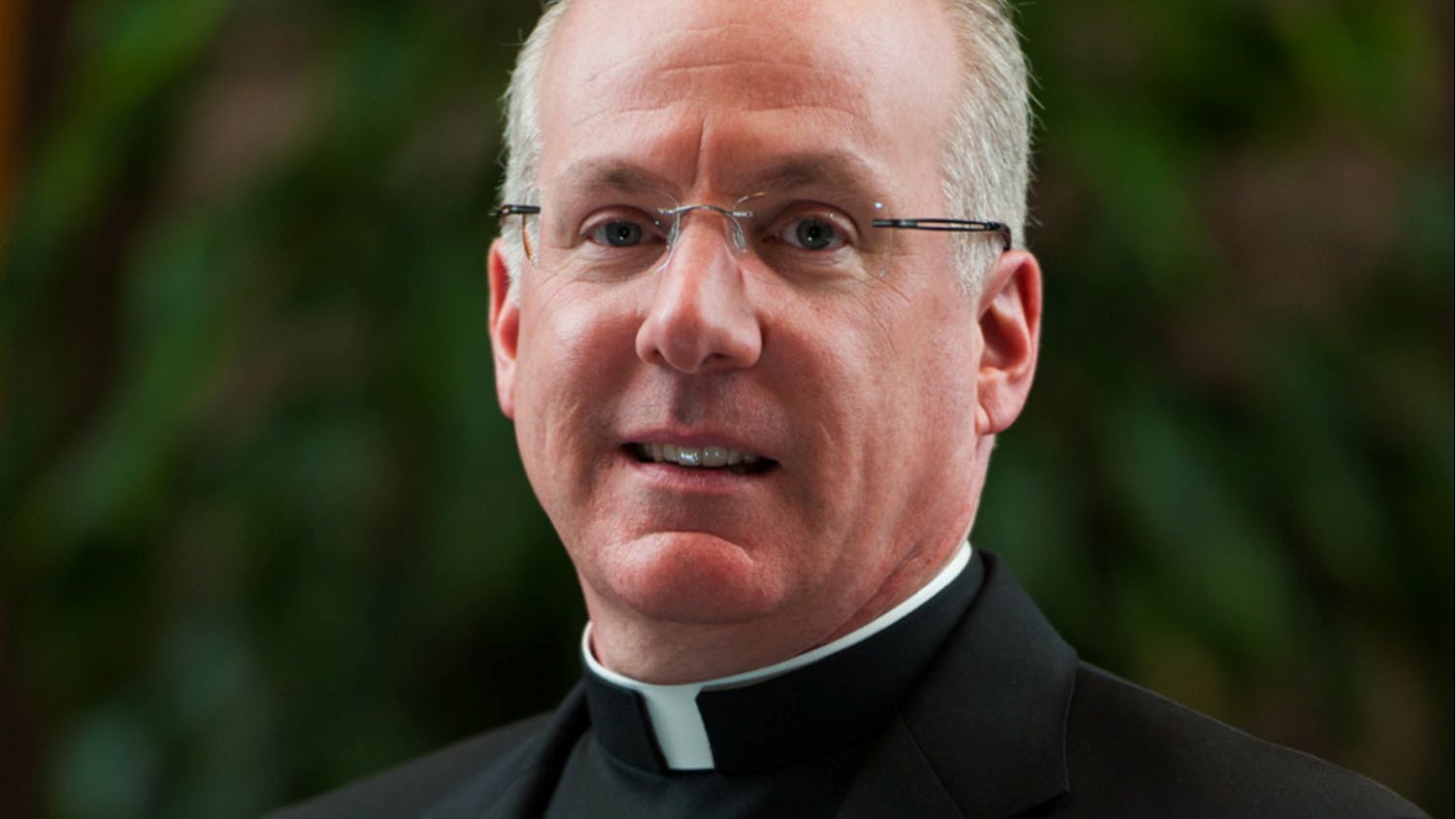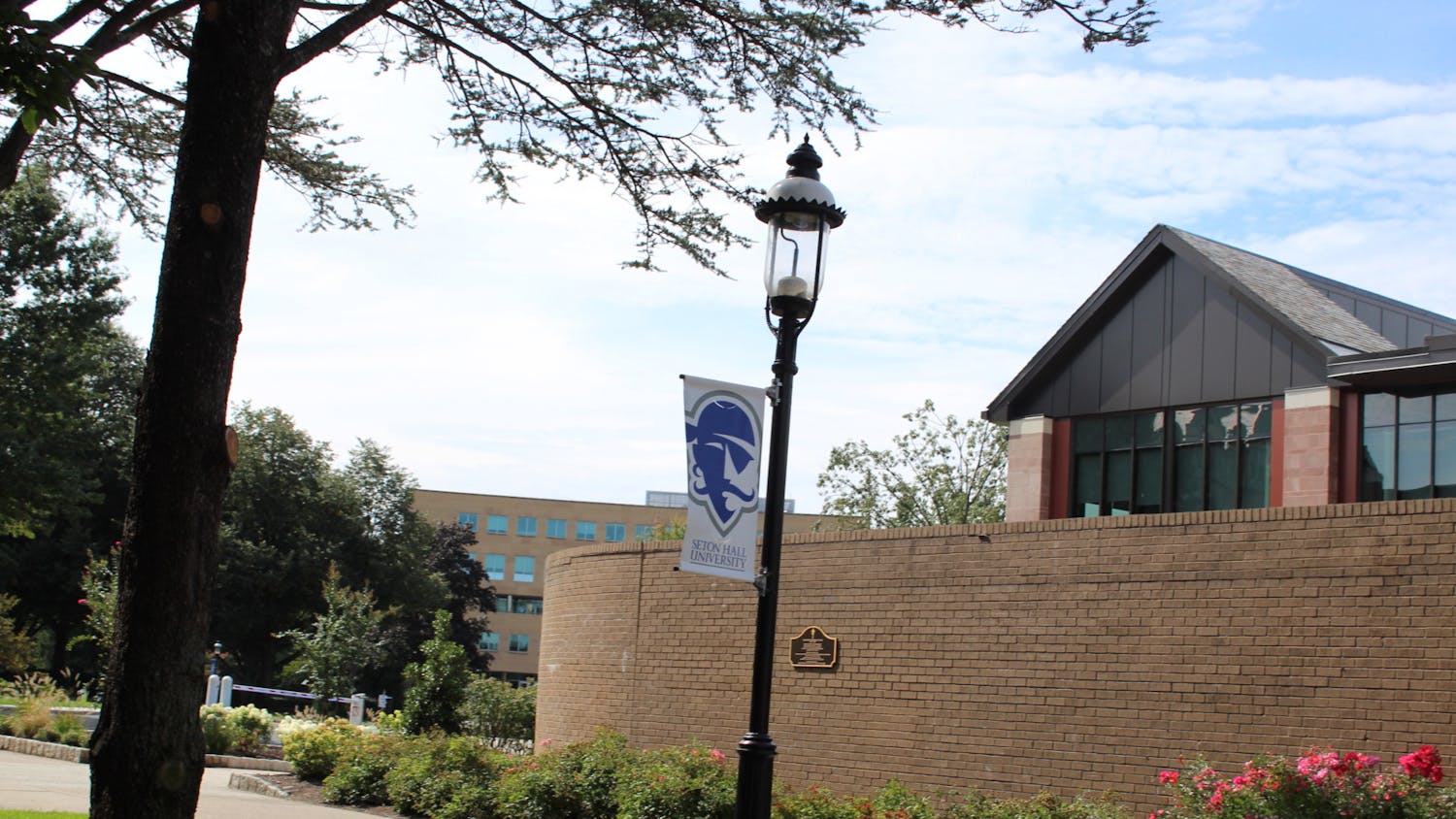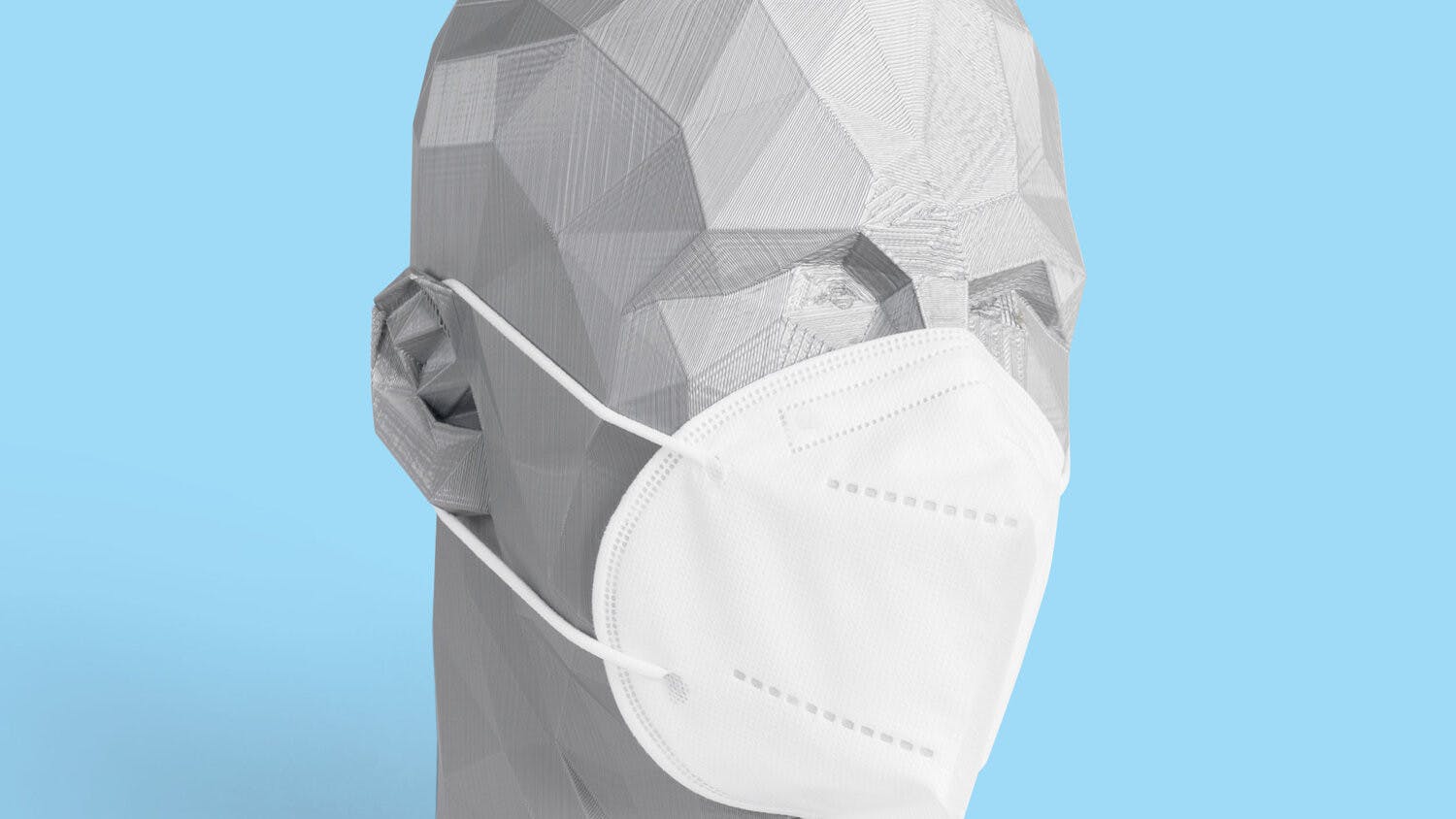It was only a few months ago that a DePaul University search committee reached out to Dr. A. Gabriel Esteban.
The committee’s goal was simple: persuade the Seton Hall president to take on the same role in Chicago. On Feb. 6, DePaul’s Board of Trustees unanimously approved Esteban to be the University’s 12th president, according to a press release. Four days later, Esteban accepted DePaul’s offer to become its first lay president, according to Seton Hall Board of Regents Chairman Patrick Murray. Then, on Feb. 16, both the Seton Hall and DePaul communities were told of the presidential transition, with Esteban set to stay in South Orange until July 1. Esteban attended a press conference at his soon-to-be new campus, while those at SHU received an email blast alerting them of the news roughly an hour later.

On Wednesday morning, Esteban sat down with The Setonian in his President’s Hall office to discuss his decision to leave for The Windy City. Donning an apropos red and blue tie, the outgoing president said that it was time for a new chapter, both for him and Seton Hall.
“This is my 10th year at Seton Hall and sometimes people forget I’ve been here for 10 years – three years I was chief academic officer and this is my seventh year as president – and I don’t believe in lifelong presidencies,” Esteban explained. “I think it’s not healthy for the institution. It’s not healthy, I think, intellectually or professionally for the individual. Seton Hall is the longest I’ve been in one place.”
He went on to say that while both institutions have similar values – DePaul is the nation’s largest Catholic school – it was the specific mission of DePaul that enticed him.
In addition, Esteban, a Filipino immigrant, will have the “added bonus” of being close to his daughter, Ysabella, a SHU graduate. A medical resident at the University of Chicago, she was unable to attend her father’s press conference. Still, he said one of the advantages of the new job will be having her close by.
On top of that, records suggest Esteban will get a bump in salary at DePaul, though he insists money had nothing to do with his decision.
“I’ve never taken a job because of the money involved. I’ve taken jobs for less money, which doesn’t say a whole lot since I’m a former businessman,” he said laughing. “It’s about whether or not you think you’re going to be happy in the position.”
As of 2014, Esteban’s “reportable compensation” was $644,031 in addition to $103,112 worth of “other compensation,” according to a Form 990 filed by Seton Hall. His predecessor at DePaul, the Rev. Dennis H. Holtschneider, made $809,934 in “reportable compensation” plus another $65,875 in “other compensation” in 2014.

As Esteban prepares for a new life in the Midwest, he recognizes that there is still work to be done here. He said he will do what is asked of him in regards to helping Seton Hall find his replacement. Murray, who will select Regents members for a search committee, said that there is no list of candidates at this time and that the option of an interim president will be considered.
Esteban, when asked if Cardinal Joseph Tobin, Archbishop of Newark, had offered any input over whether SHU’s new president should be ordained or not, said the two have not spoken in-depth on the matter. Esteban did however, clarify that, contrary to multiple reports, he served as a layman president as an exception to Seton Hall’s bylaws, not because the laws were rewritten.
Murray said that the SHU community will be updated as progress is made.
“The selection process will include a search committee comprised of Trustees, Regents, faculty members, and possibly others,” Murray wrote in an email interview, detailing the process. “The search committee will identify the skill-set and experience that the next president should have and prepare a detailed description of these requirements. An executive search firm will be engaged to look for candidates. Candidates may also be proposed to the search firm by interested parties. The search committee will interview the top candidates and present the three or four most qualified to the Board of Regents for final interview and selection.”
Esteban is not the only recent shakeup in Seton Hall’s hierarchy.
On Wednesday, Feb. 15 it was announced that David Bohan, vice president for University Advancement, will step down on Feb. 28. Additionally, Dr. Karen Boroff was recently appointed Interim Provost and Executive Vice President after Dr. Larry Robinson retired in December. Murray said that the condensed timing of the departures is “coincidental.”
Esteban, when asked why prospective college students would want to come to a University lacking definitive leadership at such critical positions, said that it is not he or other higher-ups that make Seton Hall. Rather, he said, it is the faculty and students. Just last weekend, Esteban appeared at the largest open house in campus history.
“I learned early on that administrators come and go,” he said. “It’s the faculty and staff who are here to stay. They’re the ones that embody the culture of the institution. They’re the ones who are the soul of the University, particularly the faculty. Students attend institutions because of academic programs – overwhelmingly it’s going to be because of your academic programs. None of that has changed.”
Esteban said he has heard that “the sky is falling,” but he remembers things being much worse when he first came to Seton Hall. He said that when he took over as provost in 2007 he was the fourth chief academic officer in five years. He added that SHU dealt with unfulfilled enrollment goals, budget cuts, layoffs, an off-campus student murder, on-campus rape allegations, an armed robbery carried out by basketball players and $36 million in deferred maintenance in his first few years here.
“People have very short-term memories,” he said.
Since then, Esteban has led the charge on many changes. During his presidency, Seton Hall created a new medical school and a new College of Communication and the Arts. The University reached all-time highs in fundraising, bringing in roughly $40 million over the last year and a half. Esteban also collaborated with other university presidents to help reform the Big East conference in 2013. The first of several on-going construction projects, the new University Welcome Center, is expected to open in January 2018. He said that the University currently has zero deferred maintenance and that $150 million has been invested on campus in the last five years.
In August, speaking in front of faculty and administrators, Esteban outlined a vision for Seton Hall to become one of the top five Catholic schools in the country and an overall top 75 institution by 2025. Now, however, such aspirations will have to progress without him. Furthermore, he will be heading the competition.
“The University has a whole lot of momentum,” Esteban said, highlighting some of the aforementioned accomplishments. “First of all, it wasn’t Gabe doing all of that. It’s always about the people around you. I learned a long time ago you surround yourself with people who are smarter than you, who know more about something than you. That’s the only way you’re able to move forward.”
As Esteban moves forward to DePaul, he said that he will always appreciate his time at Seton Hall. With the bells in front of Jubilee Hall ringing loud and clear, he did not hesitate when asked what he will miss most.
“That’s easy. It’s going to be the people,” he said smiling. “We’ve been able to forge relationships with members of the priest community, with the faculty, our alumni.”
Esteban also mentioned staff and students. He continued, “As you reflect on the people and relationships you’ve built, that’s what we’re going to miss the most. People talk, ‘Gabriel, your legacy is going to be Dunkin’ Donuts or the parking deck or the med school’ – I really don’t care about that. What I care about are the people.”
Gary Phillips can be reached at gary.phillips@student.shu.edu.





